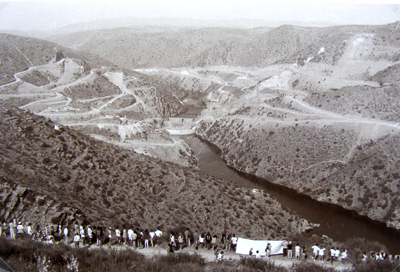

Figure 1a: Demonstration in Oporto, around 1995, against the construction of the Foz Côa Dam that would submerge the newly found Palaeolithic rock engravings in the Côa valley in Portugal (Image: Teresa Silva).
Cite this as: Marques, J. and Neto, F. 2018 Steps towards Public Engagement with Archaeological Heritage — Some Portuguese Examples, Internet Archaeology 49. https://doi.org/10.11141/ia.49.13


In this article, we wish to reflect upon the challenge of bringing the general public closer to archaeological heritage and we will present some actual examples of the Portuguese experience, illustrating an integrated approach for a participatory management of cultural heritage.
An important national milestone in the 1990s regarding public participation was the discovery of the Palaeolithic rock engravings in the Côa valley in Portugal that were to be submerged by the construction of a dam (Figure 1). This raised the profile of the debate about the preservation of these rock art sites (Figure 1a), leading to society's general awareness about the impacts of public works on archaeological heritage. The media also played an important role following every turn of the process, giving voice to the public, and especially coverage for the scientific explanations and points of view discussed by national and international archaeologists that joined the cause (see Fundação Côa Parque; Figure 1b).
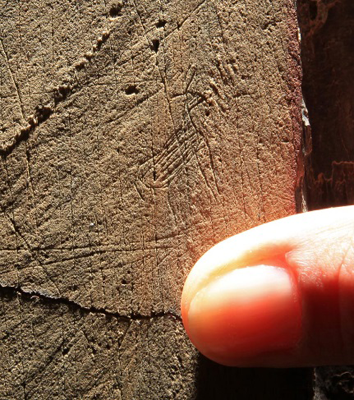
There was a huge number of public defenders of the Palaeolithic engravings, well aware of all the implications of losing such a remarkable and unique heritage. A movement, composed of scientists, namely archaeologists, local high school students, associations for cultural heritage protection and the public in general, was the driving force behind the shift of the process, which led to the abandonment of the project (Figure 2).
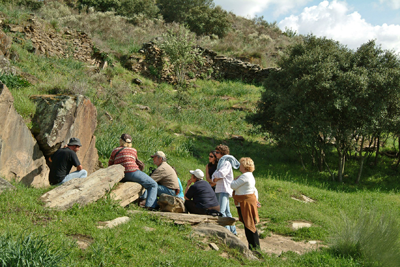
All this effort contributed to the recognition that these sites had an outstanding universal value. Since 1998, the prehistoric rock art sites in the Côa Valley, have been inscribed on the World Heritage list, which was extended in 2000 to include the nearby sites in Siega Verde, Spain.
The 1990s were a crucial period for archaeology in Portugal since they coincided with the implementation of the Valletta Convention in Europe and its ratification by the Portuguese government, which resulted in the creation of important national legal mechanisms and the development of preventive archaeology and monitoring. Since then, developers of large public construction projects have begun to coordinate with the authorities responsible for cultural heritage.
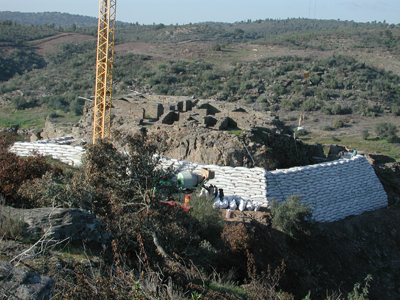
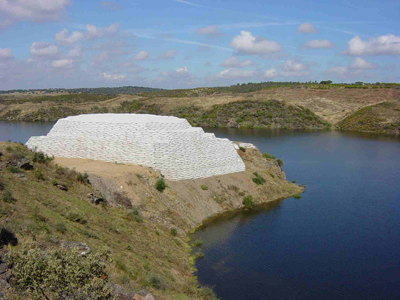
One example of this is the impact minimization plan of the Alqueva Dam, currently one of the largest artificial lakes in Europe and the largest strategic water reservoir in Europe. It is an early case of a 'Dare to Choose' archaeological management. Within the scope of the project, several stakeholders (developers, heritage guardians and archaeologists) participated in the definition of safeguarding strategies, supported by informed choices regarding archaeological heritage, including listed heritage located in the area affected by the reservoir. Known sites were partially excavated and some completely excavated; some monuments were prepared to be submerged, like the republican Roman fortress, Castelo da Lousa (Silva et al. 2006; Figure 3/3a) and a listed megalithic structure, Cromeleque do Xarez, a cromlech that was removed and reassembled elsewhere (Silva 2004; Figure 4/4a).
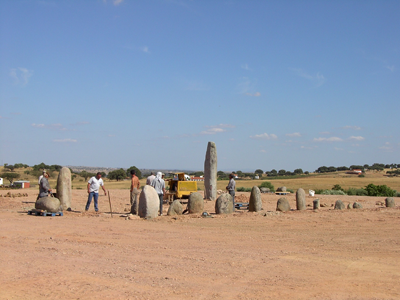
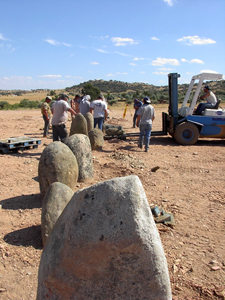
With regard to large development projects with significant effects on the environment, citizen participation is usually ensured by a mechanism of public consultation in order to guarantee that decisions on the feasibility of the project are supported not only by public entities, but also by the community, thus contributing to the protection of archaeological heritage and the regional and local identity.
The subsequent Alqueva general irrigation system (still in progress) is another example, which serves an area of around 120,000 hectares, and consists of 380 km of primary network and 1620 km of pipes in the secondary network. During the Environmental Impact Assessment process, choices had to be made to avoid direct impacts on archaeological sites like the listed Roman villa of Pisões in Beja, or to define mitigation measures such as those implemented before the construction of a reservoir at Carlota, an Iron Age and Late Antiquity/Early Middle Age necropolis (Figure 5).

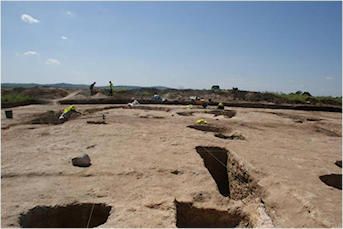
If society is to support the potential value of archaeological heritage allowing us to make informed choices, the main focus should be a democratic cultural heritage education. In the last two decades there have been national, regional and local initiatives destined to engage public awareness regarding safeguarding the archaeological heritage and general archaeological activity. As well as the cultural heritage authorities, the archaeologists themselves, developers, cultural heritage guardians, civic associations and other non-governmental organizations play an important role in this process.
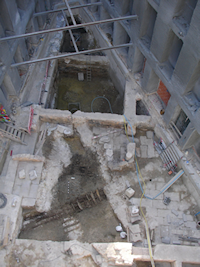
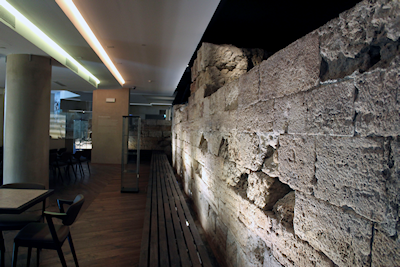
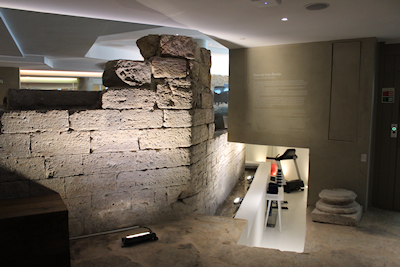
An example is the project during the recent development of the Lisbon hotel 'Corpo Santo', the remains of a 14th century city wall and a medieval tower named João Bretão after a French corsair who lived there in the 15th century, were integrated and displayed, bringing the archaeological heritage 'to life' (Figure 6a and 6b).
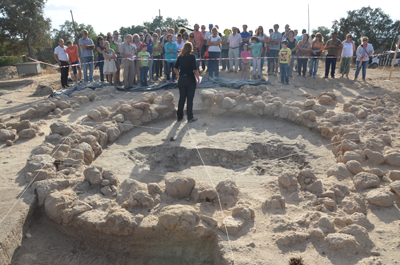
Some research projects excavations organise public open days. The University of Lisbon promotes public visits to archaeological sites as part of their fieldwork. One of these initiatives concerned a Chalcolithic settlement in the Coruche Municipality. It was considered very rewarding for both archaeologists and the communities as it gathered several generations around the same purpose of sharing information, exploring the potential of the archaeological site (Figure 7).

Other examples are the public visits organised by developers and archaeologists to some sites with archaeological significant remains that are under construction, such as recently for the excavation in the Campo das Cebolas, in Lisbon, where some port structures and ship remains from 18th century and from later periods were discovered (Figure 8). The municipal parking company and the municipal authority have produced a video disseminating these works, through a YouTube channel. Also, some developers organised or supported public exhibitions of excavated archaeological remains from the construction sites as a form of social return on the investment made, e.g. the exhibit of the Vinha das Caliças, an Iron Age necropolis in Beja made at the EDIA public limited company headquarters (Figure 9).
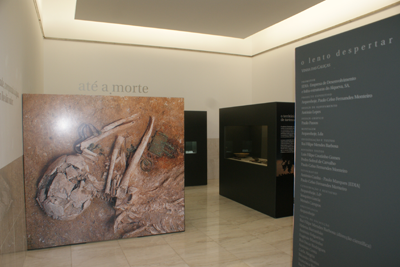
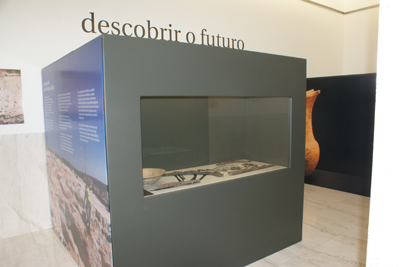
Every year, the National Archaeological Association (AAP) promotes an event named 'Archaeology Celebration' (A Festa da Arqueologia) with workshops and arts and crafts, aimed to attract all kind of audiences, especially children (Figure 10).

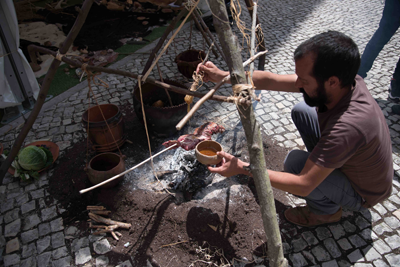
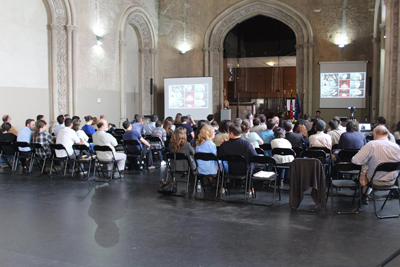
Likewise, cultural heritage authorities promote dissemination initiatives. One example is the organization of an annual meeting (Figure 11) and a national travelling exhibition, 'Archaeology in Portugal — Recovering the Past' (Arqueologia em Portugal — Recuperar o Passado), aimed at raising public awareness for archaeological research, adding scientific and cultural heritage value to the archaeological sites (Coelho et al. 2015) (Figure 12). Also, radio programmes promoting cultural heritage called 'Encounters with Heritage' (Encontros com o Património) are broadcasted every Saturday, some of them dedicated to archaeological heritage.
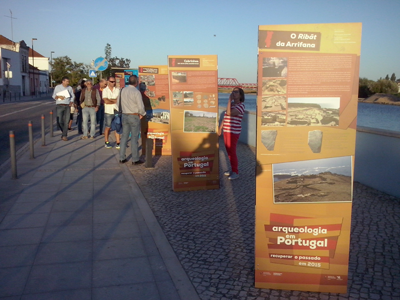
In 2012 Directorate General for Cultural Heritage (DGPC) built the 'Archaeologists' Portal', intended to bring together a wide range of information, data, resources and services and to make it available to users according to each user level of access (see Portal do Arqueólogo). At an international level, this platform is innovative and practically unparalleled especially regarding its function as a tool for submission and consultation of documentation by heritage professionals, putting Portugal at the forefront of digital services for the archaeology sector (Neto 2015).
The Archaeologist's Portal provides information about the archaeological remains found in Portugal and indexed in the national database of archaeological heritage — Endovélico, named after a pre-Roman deity (Neto et al. 2007), through a search engine (Figure 13). This information is compiled from technical reports and specialised bibliography. For public users, the geographical location of the sites is excluded to avoid possible acts of vandalism. Registered users, such as archaeologists or archaeological private companies, have deeper access to an intranet dedicated to the management and licensing of the archaeological activity, and professionals can submit permits and personal CVs, and check the status of the authorizations.

Through the availability of this information on archaeological heritage, DGPC hopes to reinforce behaviours of social cohesion and a shared sense of responsibility in the safeguarding and enhancing cultural heritage and archaeological assets.
At the end of the Archaeologist's Portal first implementation stage, DGPC submitted a new project that has been approved for the 2017-2018. ARQUEOSIA will allow the optimization of the services already developed and improve the citizen participation and interaction. It is expected to:
DGPC also participates in the STORM project (Safeguarding Cultural Heritage through Technical and Organisational Resources Management) on the recommendations for disaster risk management of cultural heritage endangered by natural and anthropogenic hazards. Within this project, a mobile software application is also being developed to inform citizens on how to act during calamities and interact with the authorities in the rescue phase of the cultural assets (Storm Project 2017).
These new ways of supporting public participation in the management processes of archaeological heritage and the accompanying raised publicity are positive ways of adding social and economic value to the heritage, thus contributing to its potential as a sustainable factor of development and social cohesion.
The Portuguese public authorities for cultural heritage management, and several other private stakeholders concerned with its safeguarding, have been continuously making efforts to encourage public participation towards archaeological heritage engagement. This movement has been growing through several initiatives, such as:

'You better start swimming or you'll sink like a stone…' To paraphrase the words of Bob Dylan, it is vital to continue the movement and go beyond, searching to implement new models and ways for a more active public engagement in the decision-making processes for the protection of archaeological heritage. It is important to involve all stakeholders: national, regional and local authorities, as well as private companies and archaeologists in joint actions to promote public awareness and access to archaeological information and knowledge. Information and communication technologies are a valuable source to accelerate this movement and reach a wider public, especially the younger generation, and promote cultural significance awareness (Figure 14).
Internet Archaeology is an open access journal based in the Department of Archaeology, University of York. Except where otherwise noted, content from this work may be used under the terms of the Creative Commons Attribution 3.0 (CC BY) Unported licence, which permits unrestricted use, distribution, and reproduction in any medium, provided that attribution to the author(s), the title of the work, the Internet Archaeology journal and the relevant URL/DOI are given.
Terms and Conditions | Legal Statements | Privacy Policy | Cookies Policy | Citing Internet Archaeology
Internet Archaeology content is preserved for the long term with the Archaeology Data Service. Help sustain and support open access publication by donating to our Open Access Archaeology Fund.